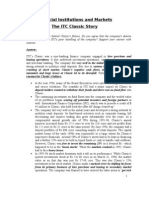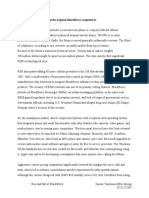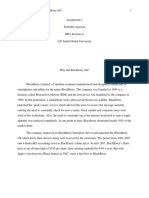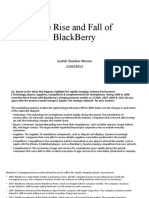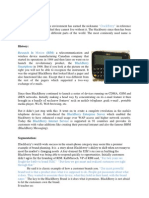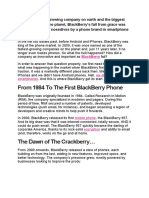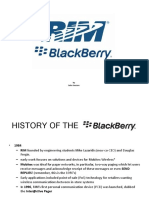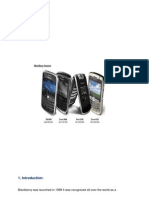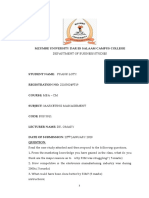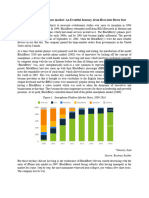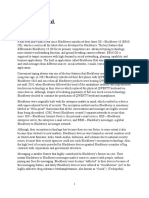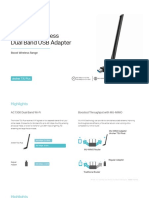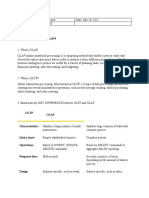67% found this document useful (12 votes)
4K views21 pagesBlackberry Downfall
The document summarizes the rise and fall of BlackBerry. It discusses how BlackBerry was founded in 1999 and captured the smartphone market with secure messaging devices popular with businesses and governments. However, BlackBerry failed to innovate and anticipate new trends driven by the iPhone and Android devices. New products like the PlayBook tablet and BlackBerry 10 phone were delayed and unsuccessful. This inability to compete on apps, touchscreens and internet capabilities led to a decline in market share and the eventual downfall of BlackBerry.
Uploaded by
Ali HasnainCopyright
© © All Rights Reserved
We take content rights seriously. If you suspect this is your content, claim it here.
67% found this document useful (12 votes)
4K views21 pagesBlackberry Downfall
The document summarizes the rise and fall of BlackBerry. It discusses how BlackBerry was founded in 1999 and captured the smartphone market with secure messaging devices popular with businesses and governments. However, BlackBerry failed to innovate and anticipate new trends driven by the iPhone and Android devices. New products like the PlayBook tablet and BlackBerry 10 phone were delayed and unsuccessful. This inability to compete on apps, touchscreens and internet capabilities led to a decline in market share and the eventual downfall of BlackBerry.
Uploaded by
Ali HasnainCopyright
© © All Rights Reserved
We take content rights seriously. If you suspect this is your content, claim it here.
/ 21
